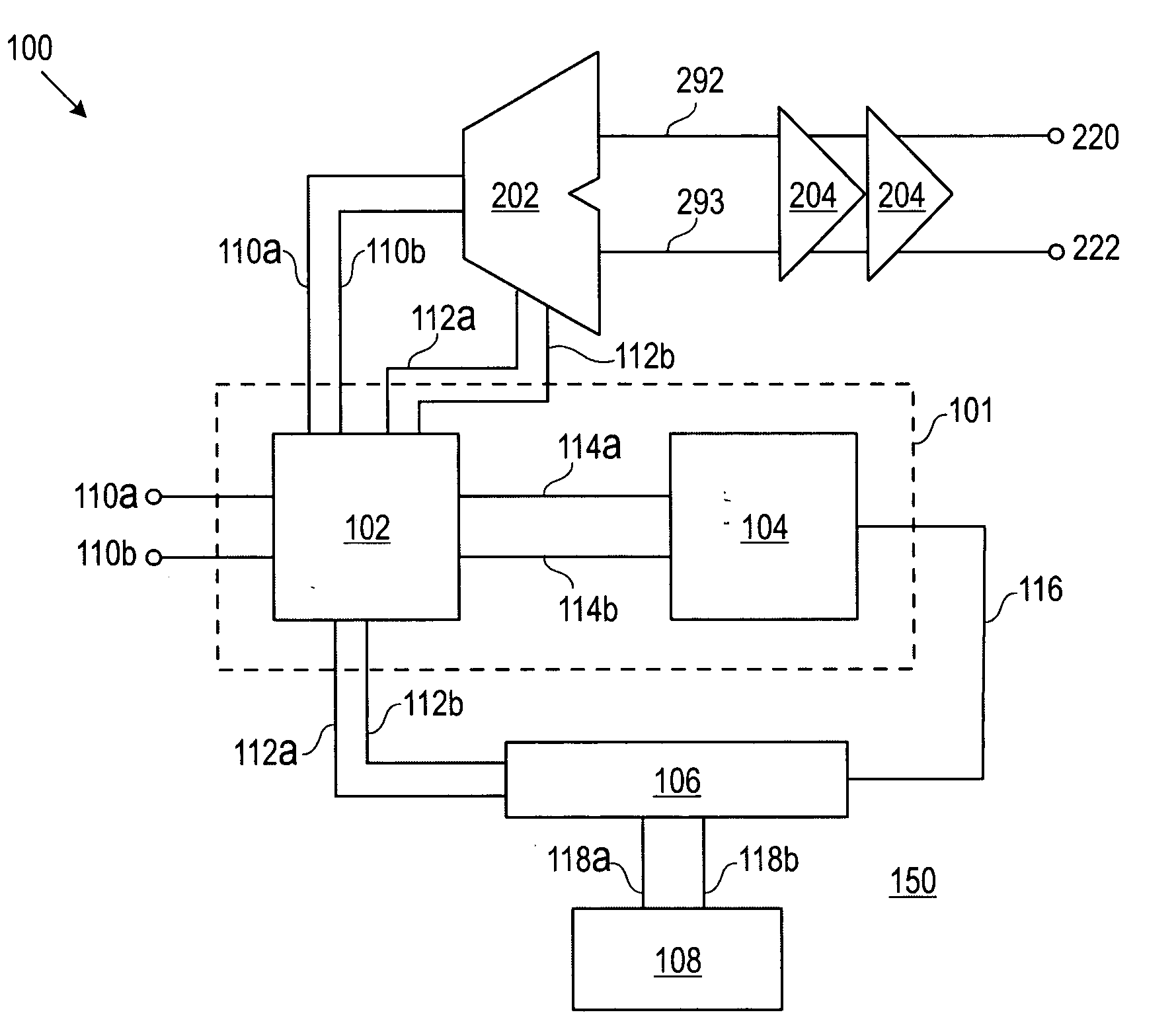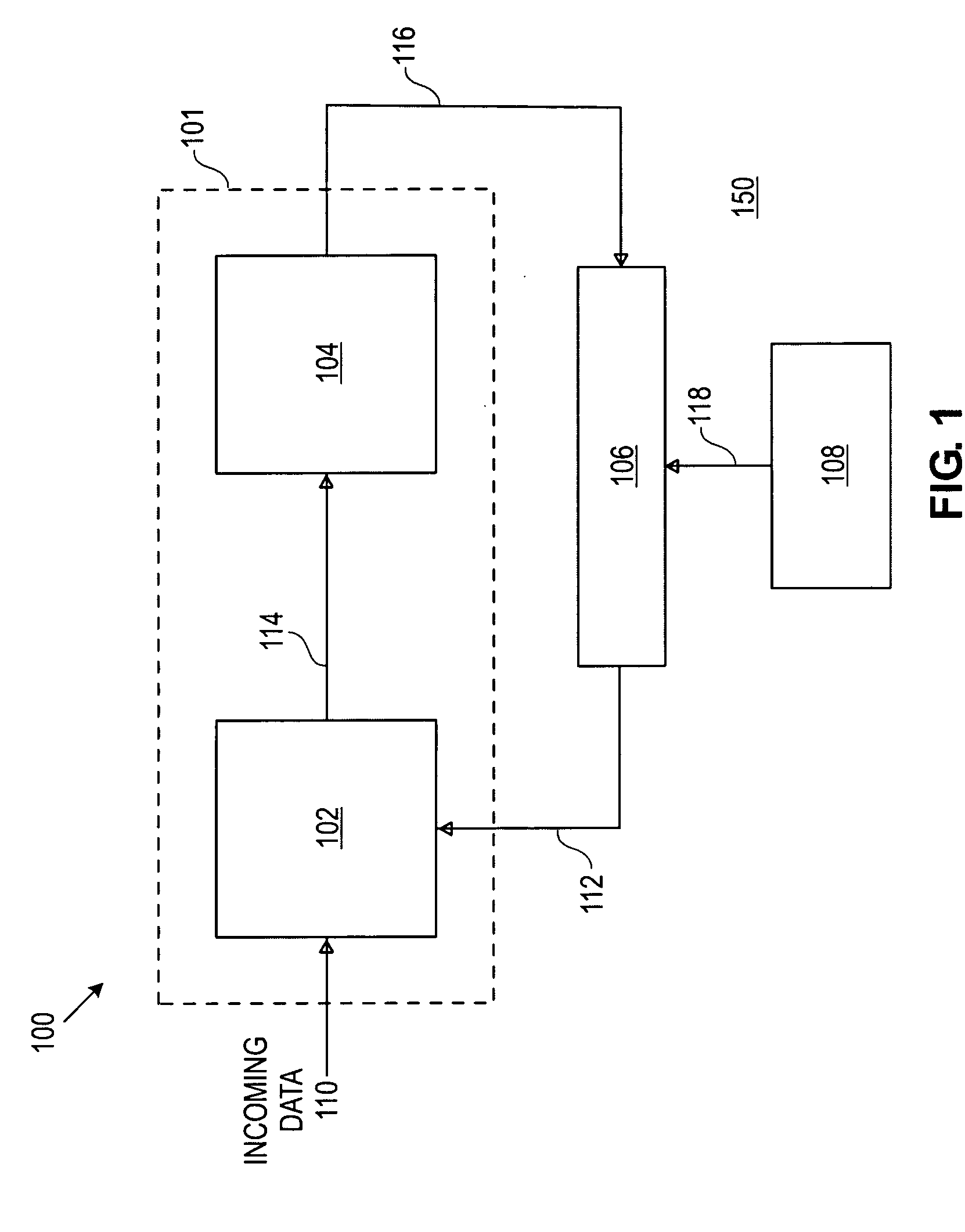Distributed delay-locked-based clock and data recovery systems
a delay-locked, clock-based technology, applied in pulse generators, pulse manipulation, pulse techniques, etc., can solve the problems of inability to scale to higher speeds and frequencies, vco can introduce undesirable timing jitter, and full-rate architectures
- Summary
- Abstract
- Description
- Claims
- Application Information
AI Technical Summary
Benefits of technology
Problems solved by technology
Method used
Image
Examples
Embodiment Construction
[0024] Distributed clock and data recovery (CDR) systems using a delay-locked architecture with distributed variable delay lines are provided herein. The CDR systems are scalable across a wide range of bit rates and frequencies making them suitable for numerous applications including, but not limited to, broadband high-speed optical communication systems. The CDR systems can be implemented in inexpensive digital semiconductor processes, such as complementary-metal-oxide semiconductor (CMOS) processes and the like.
[0025]FIG. 1 depicts one exemplary embodiment of CDR system 100. CDR system 100 uses variable delay line 106 to vary the delay in a clock signal to “lock” the incoming data through feedback control. In this embodiment, CDR system 100 includes a first section 101 coupled with a variable delay line 106. First section 101 includes a phase detector 102 coupled with a charge pump 104. The phase detector 102 is configured to compare incoming data stream 110 with clock signal 112...
PUM
 Login to View More
Login to View More Abstract
Description
Claims
Application Information
 Login to View More
Login to View More - R&D
- Intellectual Property
- Life Sciences
- Materials
- Tech Scout
- Unparalleled Data Quality
- Higher Quality Content
- 60% Fewer Hallucinations
Browse by: Latest US Patents, China's latest patents, Technical Efficacy Thesaurus, Application Domain, Technology Topic, Popular Technical Reports.
© 2025 PatSnap. All rights reserved.Legal|Privacy policy|Modern Slavery Act Transparency Statement|Sitemap|About US| Contact US: help@patsnap.com



